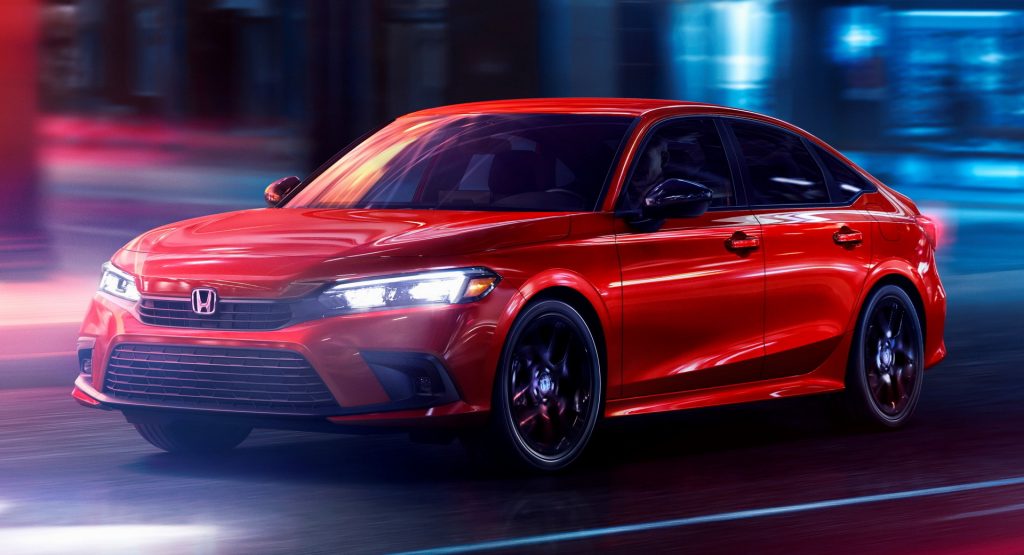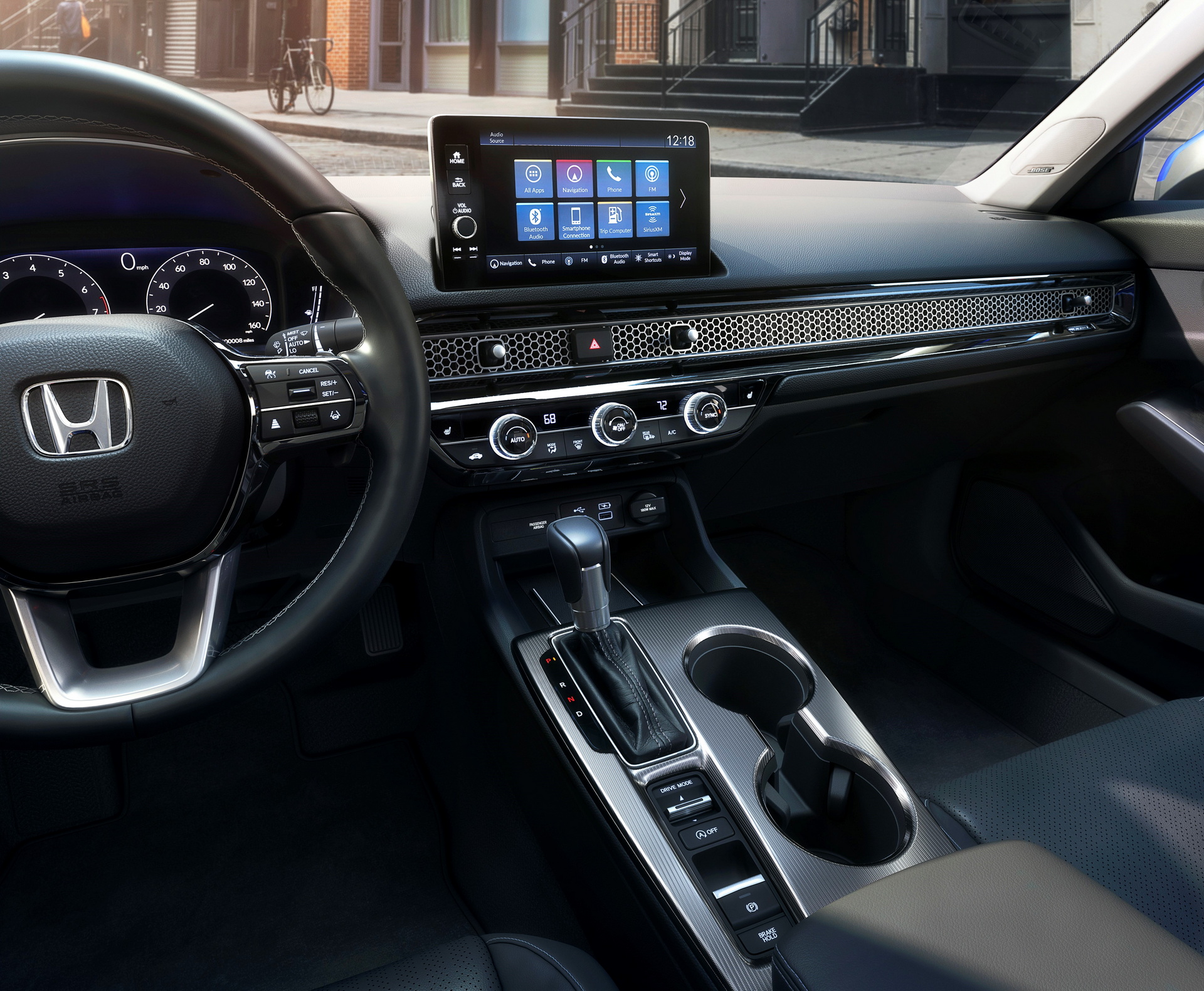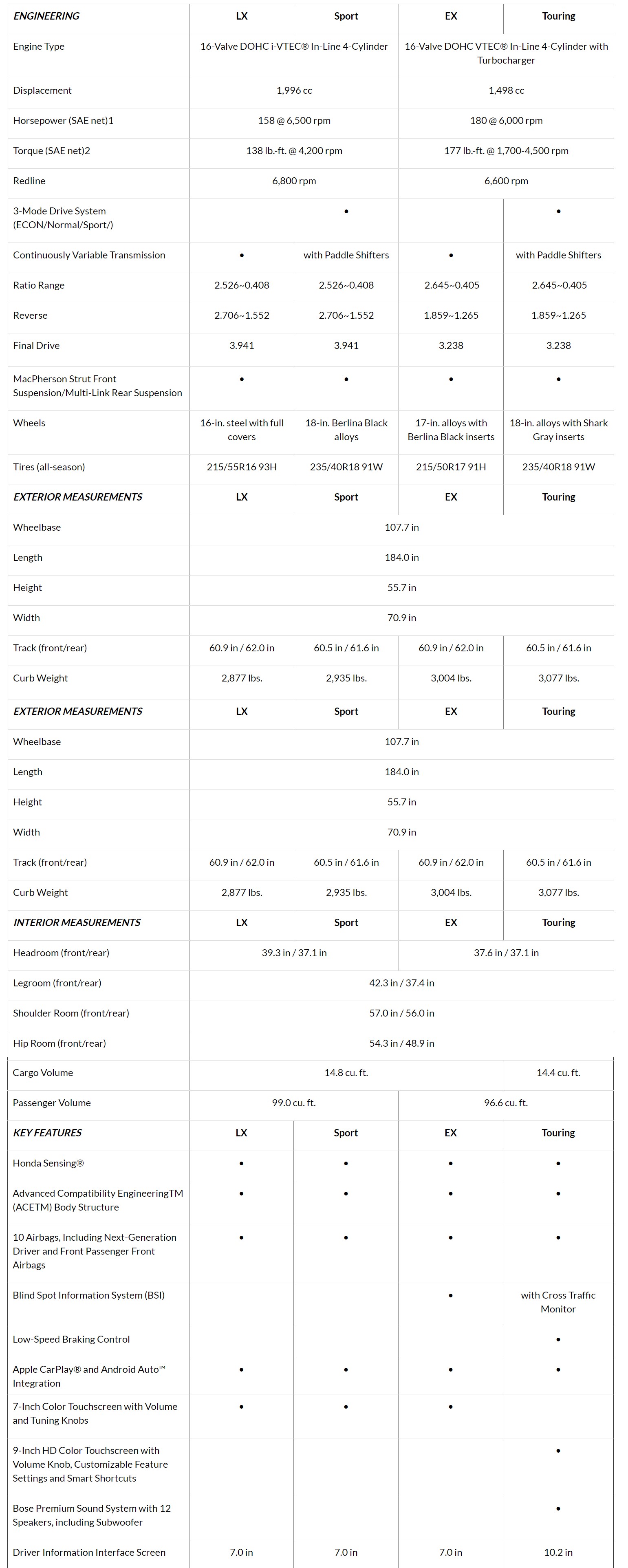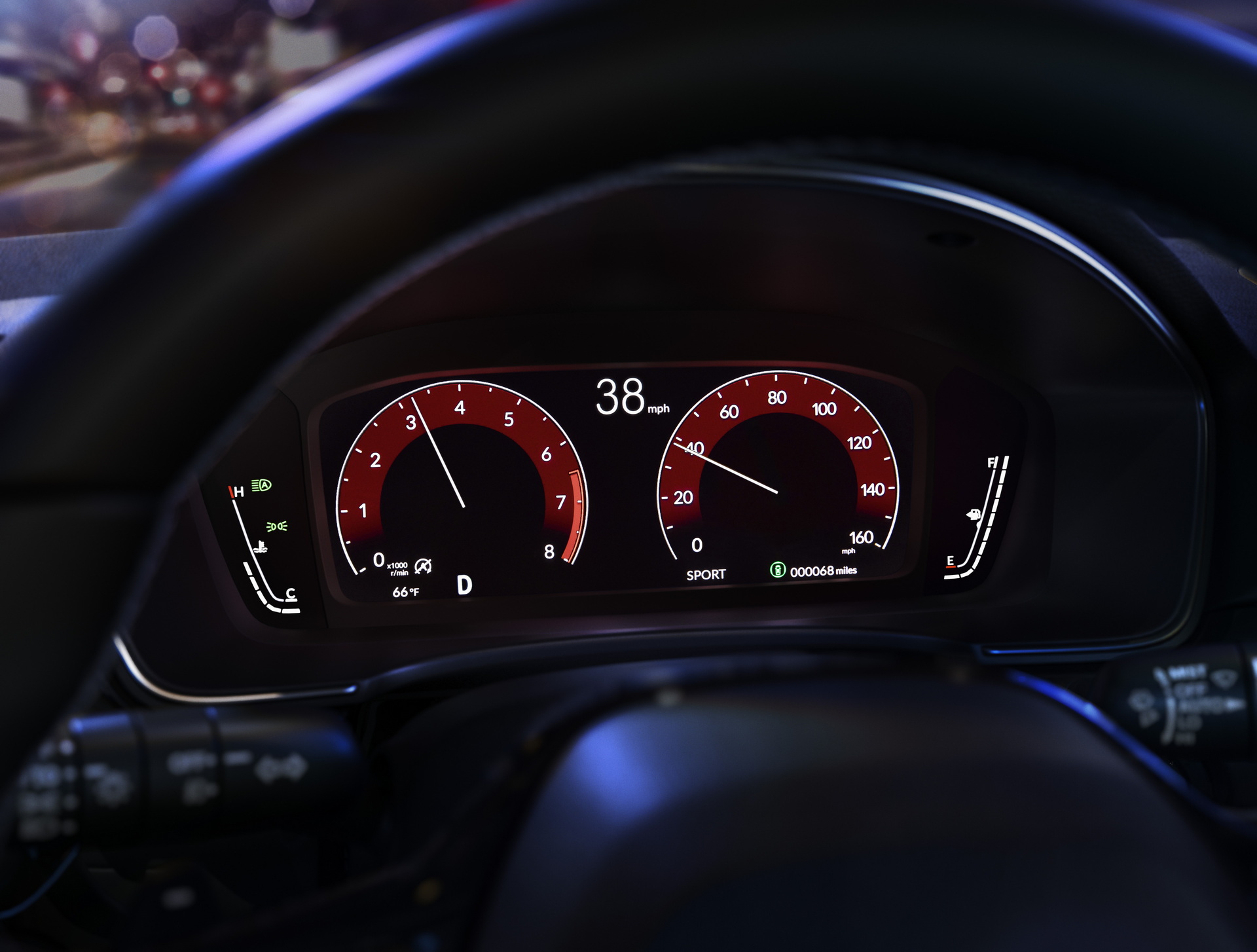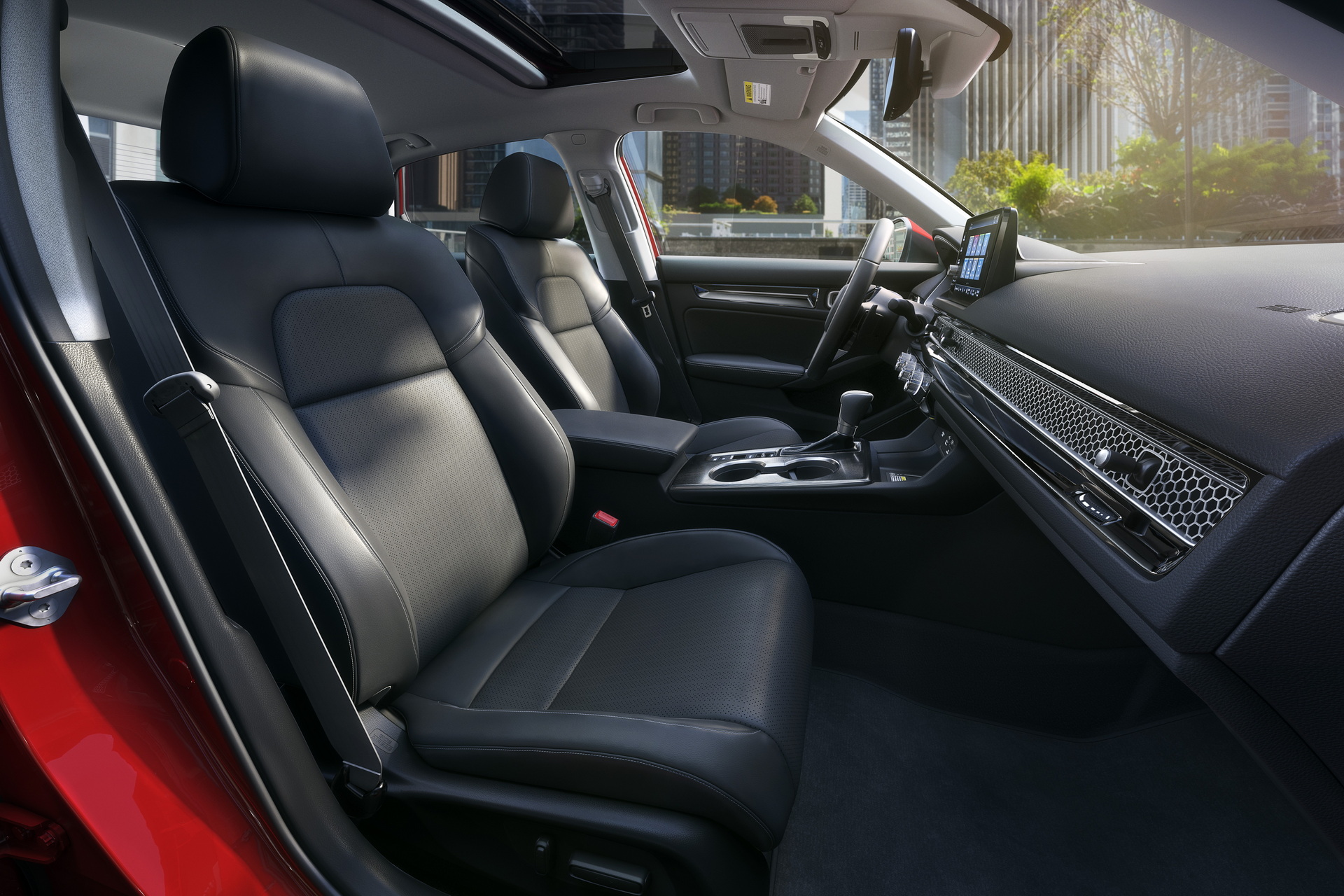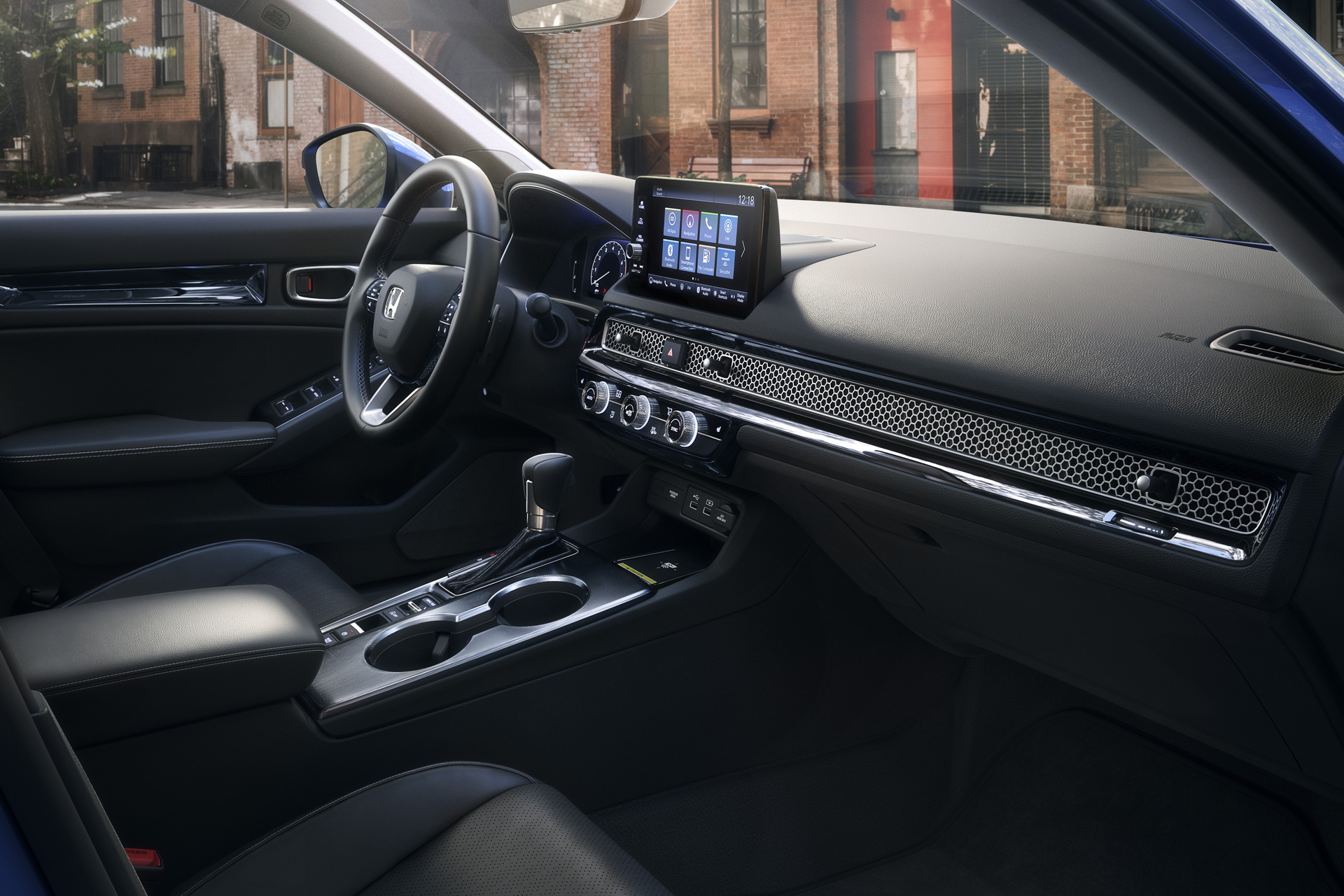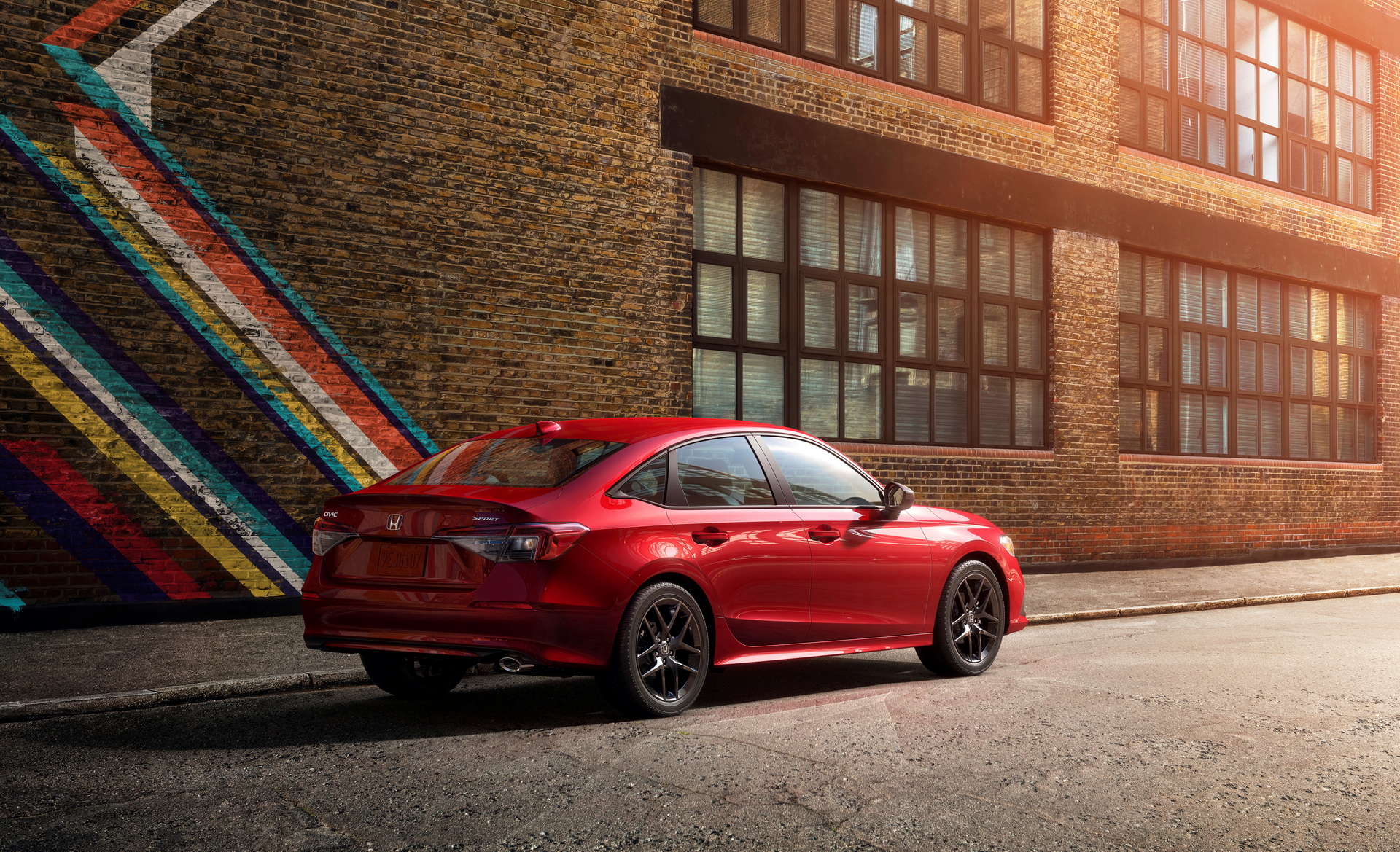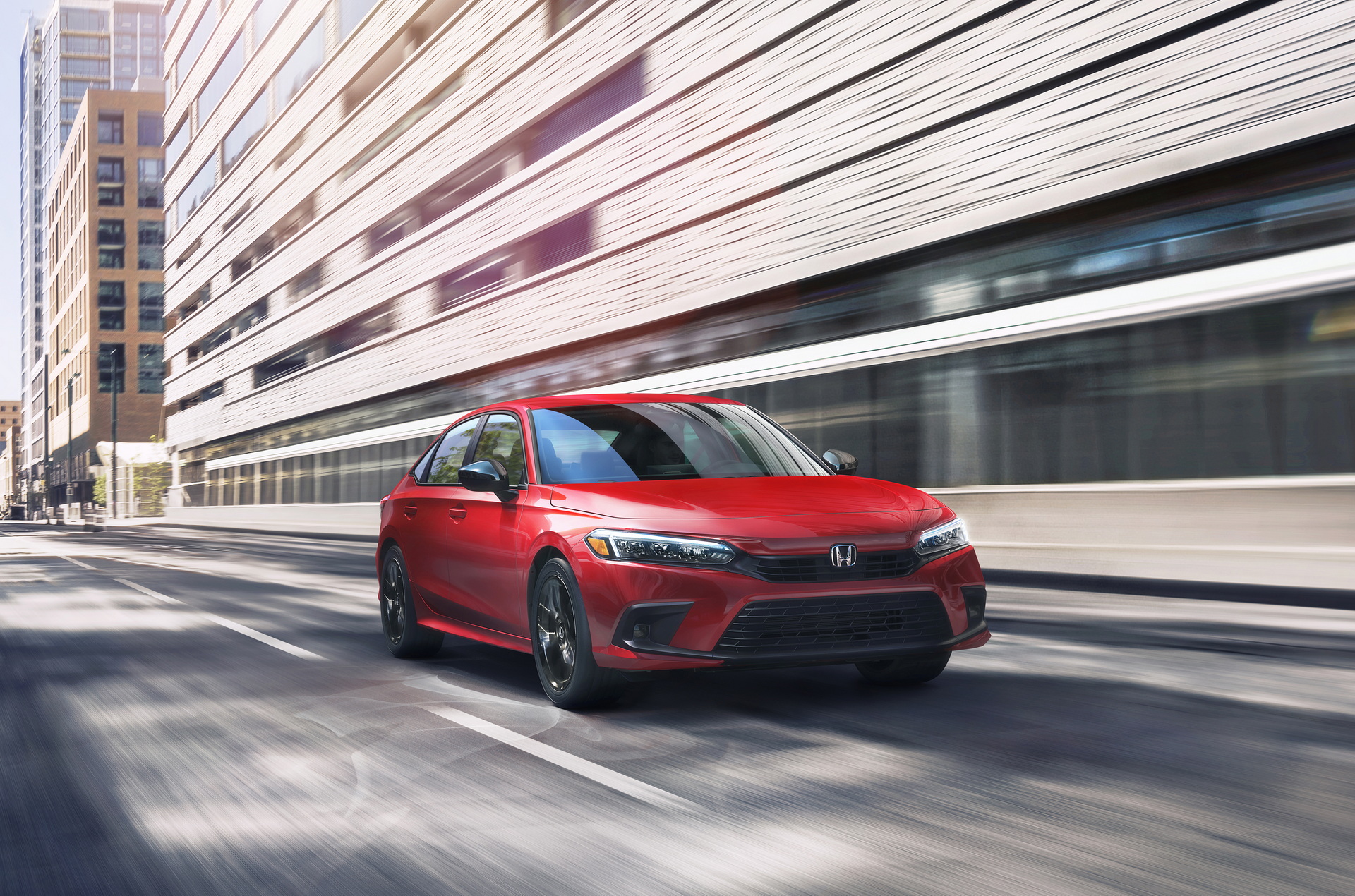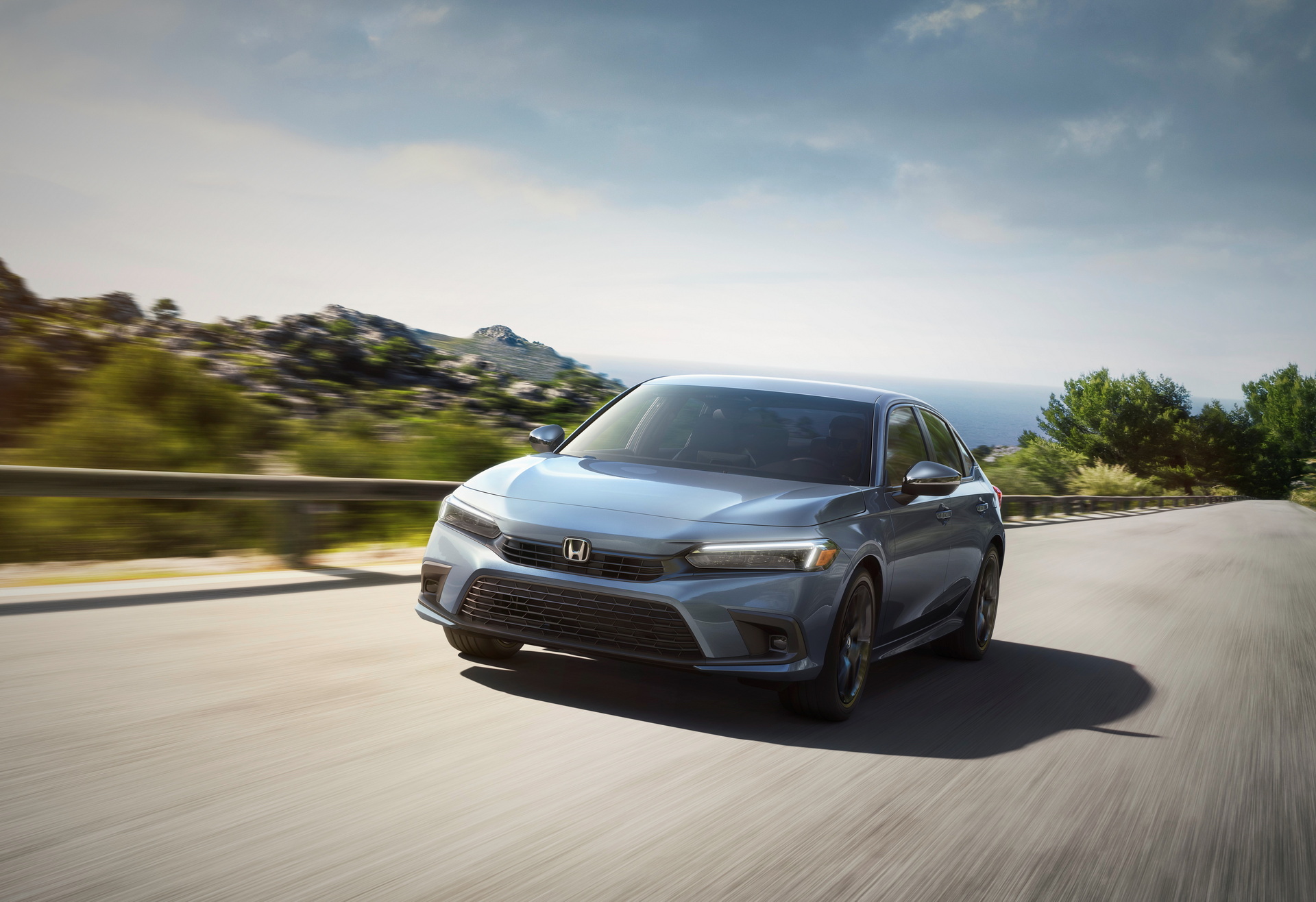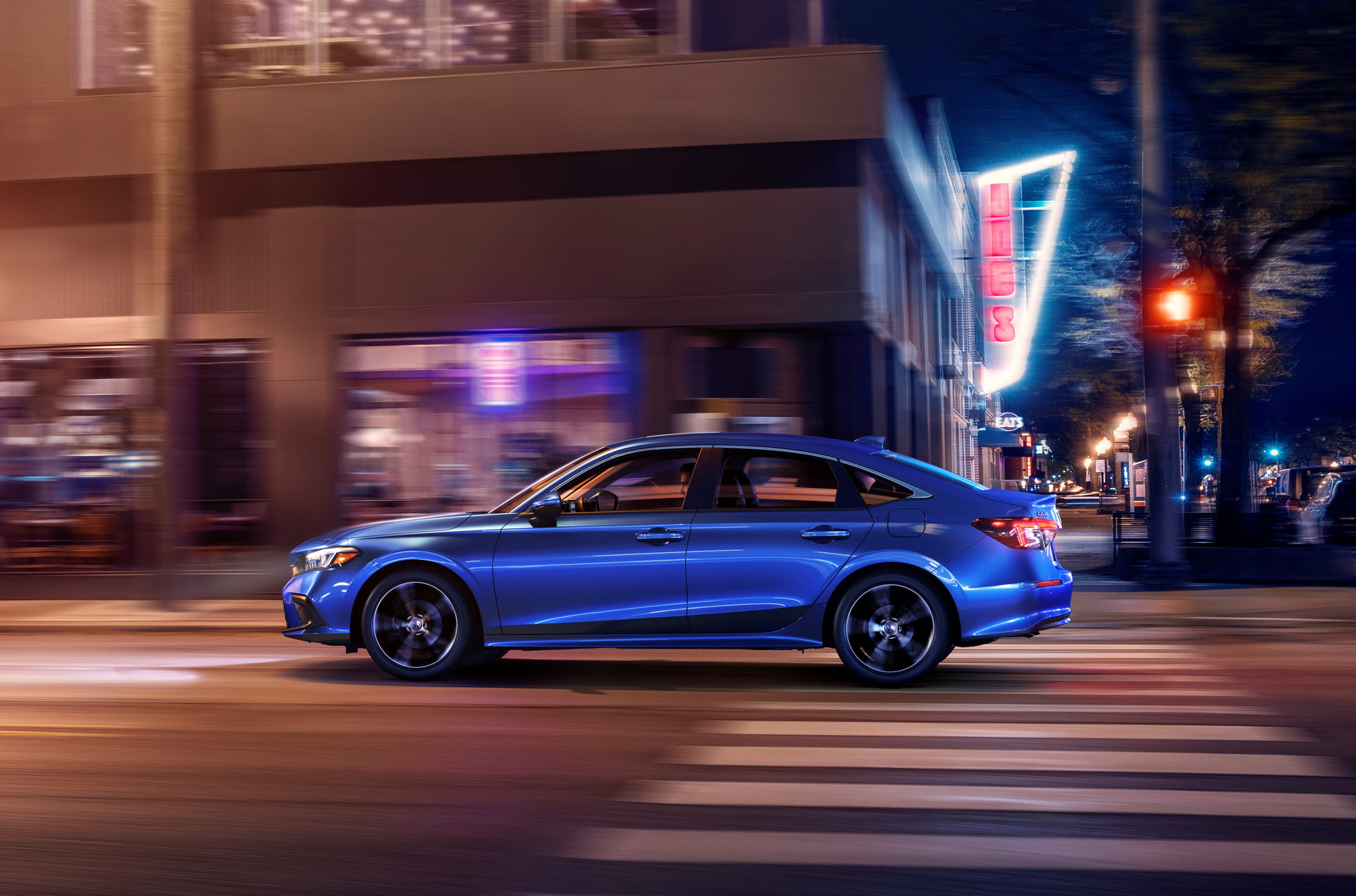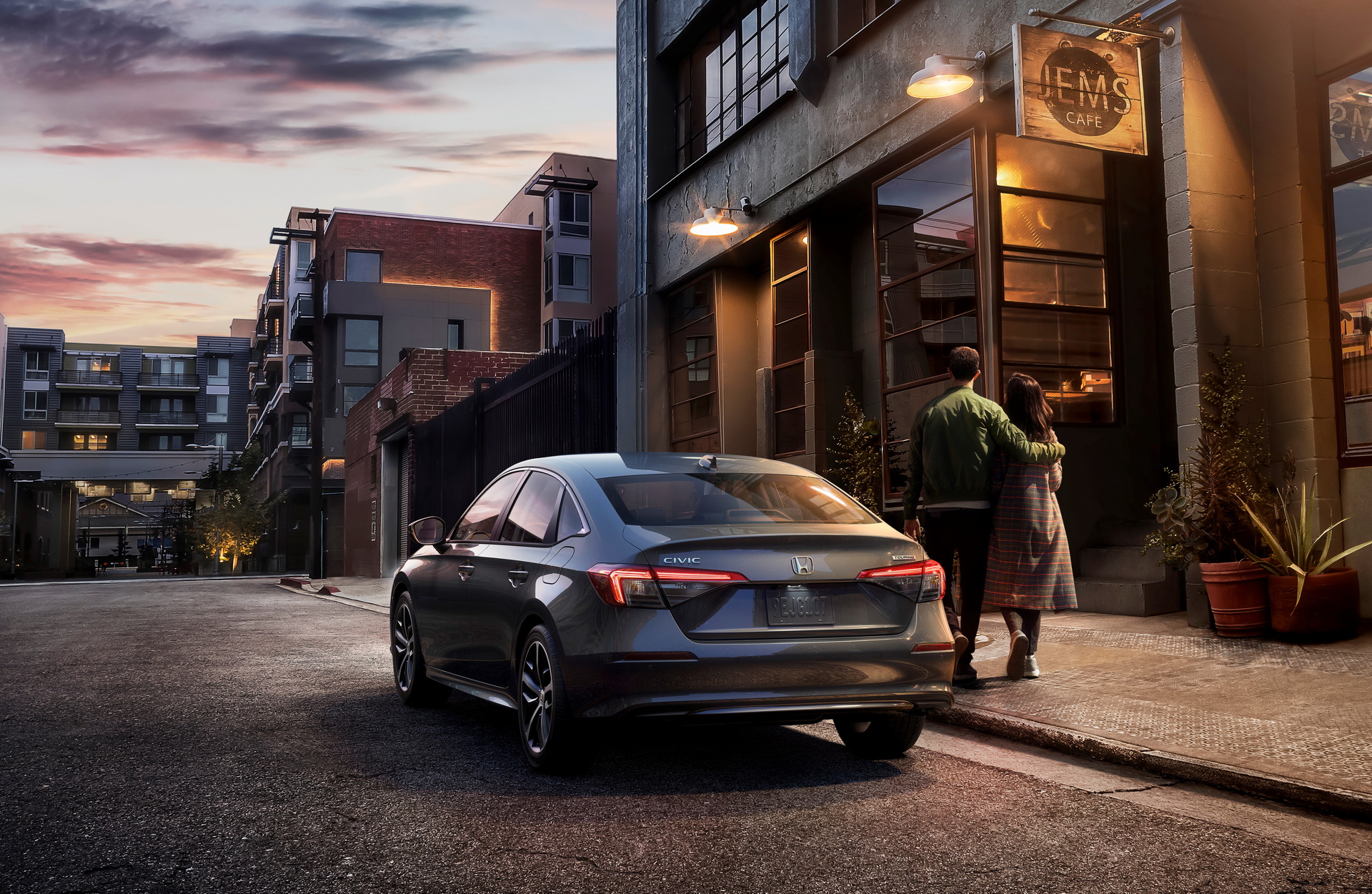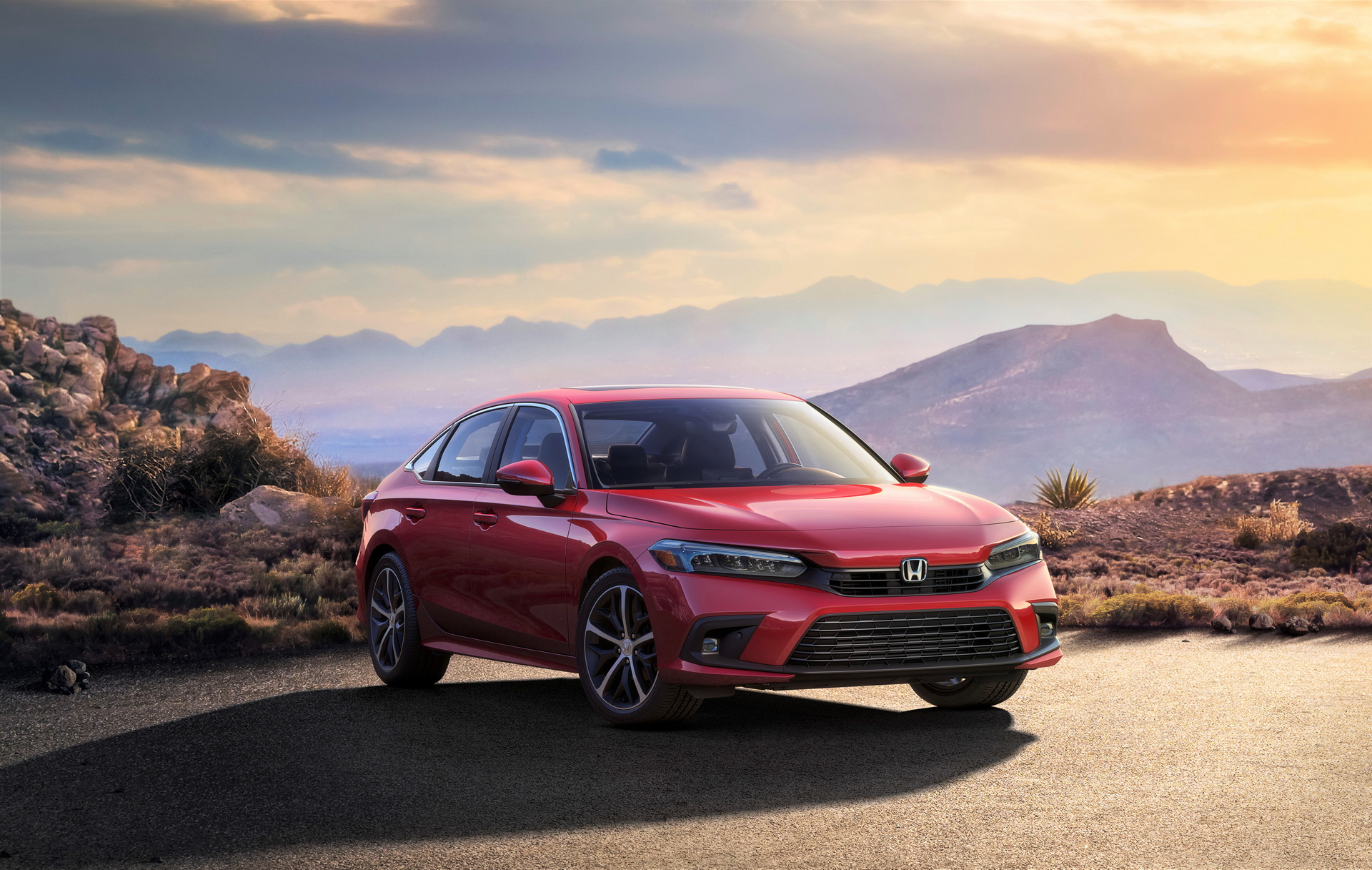Honda has just unveiled the brand new 11th-generation Civic Sedan. Packed full of fresh tech, like a digital instrument panel, Bose sound system, and revised looks inside and out, the new Civic will look to continue its record as one of the best-selling cars in America over the last 48 years.
Honda has tried to simplify the appearance of the Civic inside and out. To do that, it returned to the original design philosophy that made the Civics of the ’70s such a success: Man Maximum/Machine Minimum.
Design For Humans, Not Spec Sheets
The M/M maxim has led to a “thin and light” body design according to Honda. They worked hard to simplify the car, which has few design lines, while also making it look more premium.
To do that, they did things like move the bottom of the windshield pillars back two inches. That makes the hood look longer, giving it more classic proportions. Where the team kept design lines, they did so intentionally. The sharp character line that cuts across the Civic’s bodywork connects the front and the back of the car, flowing into the taillights.
Read Also: 2022 Civic Prototype’s Design Explained By Honda Boss
The new Civic also has a wider rear track, which Honda says it highlighted with stronger rear shoulders and wide-set LED taillights. The upswept design of the rear, meanwhile, looks sporty and helps with aero efficiency.
Honda says that it all contributes to a car that is unburdened by the weight of unnecessary design cues, but looks planted. To show it all off, the Civic will be available in eight exterior colors, including three brand new ones: Meteorite Gray Metallic, Sonic Gray Pearl, and the Civic-exclusive Morning Mist Blue Metallic.
Not Just Screens But Physical Controls Too
The new interior, as you’d expect, features more screens. It now includes a 10.2-inch fully digital instrument panel and a 7-inch infotainment screen as standard. Not massive by industry standards, but certainly bigger than the outgoing model’s screen. For those who want a little more real estate, a 9-inch infotainment screen is also available. Wireless Apple CarPlay and Android Auto are standard and the Touring trim comes with standard Qi-compatible wireless charging.
Unlike other modern cars that have all functions controlled by the central touchscreen, the Civic has physical controls for the A/C as well as a volume knob for the sound system which, for the first time in a Civic, can be a 12-speaker one by Bose. Honda has also added a 0.8-inch finger rest at the bottom of the touchscreen to make it a little easier to use.
A Roomier, More Premium Interior
The interior materials have been chosen with practicality in mind. That means that center console materials won’t show fingerprints like they do on “piano black” trim that’s all over vehicle interiors these days. The company also says that it has made all of the materials you touch as nice as possible to give the car a premium feel.
Design-wise, premium is again the focus. Although simple, Honda hopes that the honeycomb mesh accent that stretches across the dash looks clean and fancy. It is the main visual attraction of the design and hides air vents that “would otherwise mar the uncluttered and harmonious look of the dash”.
The design, inside and out, isn’t just about looks, though. Honda says that the low beltline means better visibility out of the car. Moving the bottom of the windshield back allowed it to shrink the top of the dash, which has been designed with few cut lines to prevent it from reflecting on the windshield glass. It also moved the mirrors away from the A-pillars for better visibility.
And by making the car a little longer and wider (more on that later), you don’t just get broader shoulder lines, but also more room for your head, legs, hips, and shoulder inside, so the new Civic is more spacious for all passengers.
A More Involving Drive, Improved Safety
As mentioned above, the rear track of the new Civic is a half-inch wider, while the wheelbase is 1.4-inches longer, contributing to better stability and a smoother ride. Despite the added length and width, though, Honda has managed to make the 11th-gen Civic the stiffest ever. By using high-strength steel and aluminum strategically, torsional rigidity has improved by 8 percent and bending rigidity by 13 percent. This has benefits for ride, handling, and safety.
The structure has been designed to meet current and future crash test requirements, but thanks to its use of materials, Honda has managed to minimize additional weight. However, the Japanese company isn’t just relying on the crash structure. The 2022 Civic introduces a world-first airbag that is designed to reduce brain injuries by better controlling the motion of the head during certain kinds of crashes. The donut-shaped driver-side airbag will cradle the head in an accident, while the three-sided passenger airbag that opens like a book works similarly.
Returning to the chassis, the new Civic gets MacPherson struts up front, with low-friction ball joints and front damper mount bearings that improve steering feel. Out back, meanwhile, larger compliance bushings minimize harshness and the two rear lower arms also get new bushings to reduce vibrations in the cabin and improve straight-line stability.
The front sub-frame has been made of aluminum with a truss and rib structure for better rigidity and stability. Low friction front and rear wheel bearings reduce rolling resistance and the retuned electric power steering provides better feedback. It should all, Honda says, contribute to a car that feels better to than ever to drive.
Same Engines, Better Fuel Economy
The new Civic will be available with two four-cylinder engines, a 158 hp, 138 lb-ft of torque 2.0-liter naturally aspirated mill and a 180 hp, 177 lb-ft of torque turbocharged 1.5-liter unit.
The turbocharged engine’s figures mean it gets a 6 hp and 15 lb-ft of torque bump over the same engine from the last generation. It’s not the only thing that has been improved, though. The CVT that is mated to both engines gets lower friction components and improved tuning to better replicate a transmission with gears and will now “downshift” as you’re braking.
All of which has led to slightly better fuel economy. The LX trim gets the biggest improvement, with 2 more MPG combined, while the Sport and the Touring earn 1 better MPG combined. The EX remains the same.
Advanced Driver Aid Technology
Practically all new cars, at least in Western markets, come with a host of safety features. In the Civic’s case, it’s called the Honda Sensing suite of active safety technology and it’s been improved thanks to a new camera that provides a wider field of view than before. In concert with better software, the system can now see more and identify pedestrians, cyclists, and other vehicles faster.
The adaptive cruise control has also been improved for more natural-feeling braking and quicker reactions. While keeping you in your lane, it will steer more naturally, too.
The 2022 Civic sedan is set to go on sale this summer, with production taking place at Honda’s plant in Alliston, Ontario, Canada. The hatchback, which will follow after a few months, will be manufactured at the company’s Greensburg, Indiana plant. Pricing hasn’t been announced yet but we expect it to start a little higher than the 2021 model’s $22,150 base price.




